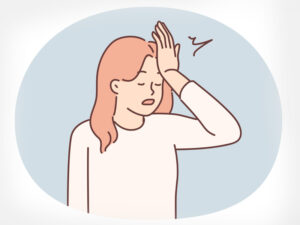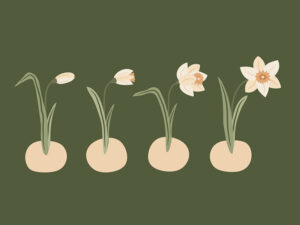Have you ever looked back at an old photo of yours and heard yourself say, ‘Look at me, so cringe’? Or came across a piece of work you did a few years ago but couldn’t bear the sight of it?
If you are familiar with such cringe attacks, know that you are not alone. I am especially prone to them when Facebook notifies me of a memory from 10 years ago. I scrunch my nose, squirm a little and pray nobody apart from the Facebook algorithm remembers it.

Although not clinically proven, in its most basic form a cringe attack is an evolutionary trait. It comes to us with the best of intentions: to remind us to not repeat certain types of actions or behaviours. But does it mean something at a deeper level too and can you use it to your advantage?
Occasionally I come across an old piece of writing, a published document or a creative I designed and catch myself wincing. Read up a little on the subject and you will find most people’s hindsight is 20/20! It is tempting to critique every word, every sentence, every brush stroke and every design element, only to conclude that if you were to redo the exercise today, it would be a 100% better. There may be nothing strikingly wrong with the original piece of work but painstakingly agonising over ever tiny detail will make you find faults that perhaps did not even exist.
At her commencement address for NYU, American singer and song writer, Taylor Swift, advised we should simply learn to live alongside cringe. ‘No matter how hard you try to avoid being cringe, you will look back on your life and cringe retrospectively’, she said to the graduating class as they cheered her on in agreement. Sure enough, with time and experience, preferences change and what may have been acceptable or even preferable to you once may be, well, cringe for you today.
But looking back at yourself or your work and being able to draw comparisons is a healthy sign. You are only able to feel that cringe because you are better today than yesterday. An idea you pitched in the past or a project you led long ago cannot reflect the work you have done on yourself since then, nor can it account for the lessons and experiences that you have gained. Consequently, some days you have to bear the cringe to learn from past versions of yourself.

Sometimes kind friends and colleagues send me recordings of my presentations. The videos just sit there in my phone gallery till I can gather the courage to sit through the cringe of watching myself speak to a large audience. I can choose to protect myself from this unpleasant experience and never learn from mistakes. Or I can bear the wince and be a step closer to being a better speaker. It’s up to me look at the gap as growth or focus on what I lacked.
To sum up, if you wince at your past self, you are a better person now. If you wince at your past work, you are a better professional today. Either way, you have earned the joy of celebrating your journey and the strides you have made.
So embrace the cringe for your future self is already cringing looking at you today.
References
- The psychology of cringe, The HuffPost UK
- A cultural history of ‘cringe’ and how the internet made everything awkward, The Swaddle
- Taylor Swift’s Commencement address at NYU
https://www.youtube.com/watch?v=OBG50aoUwlI

